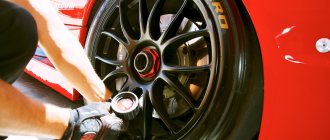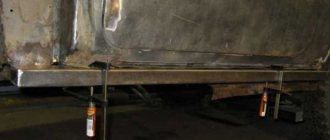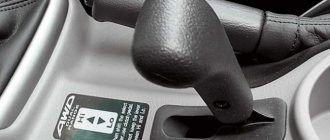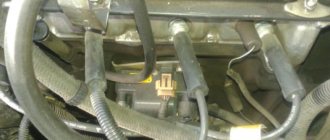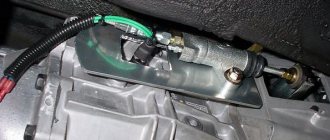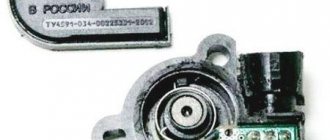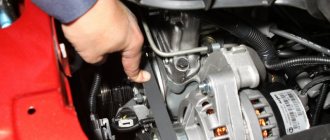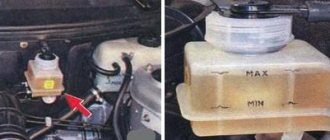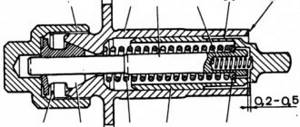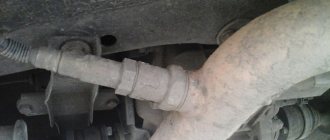A little about the Solex carburetor
Initially, VAZ equipped its cars with carburetors of the Weber family. These carburetors were completely mechanized. They lacked any electrical wiring and were not very reliable. Practically, they constantly needed attention, since the main struggle of car owners was aimed at returning the engine to idle speed. Only rear-wheel drive cars of the Zhiguli family VAZ 2101, 2103 and 2106 of the early versions were equipped with it.
“Weber” was replaced by “Ozone”, which began to be successfully used on VAZ 2105-07 cars. It was a perfect design, which was equipped with idle economizers and an autonomous system. The idle problem has been resolved. Ozone was also used on Niva cars.
With the advent of the front-wheel drive VAZ 2108 on the assembly line, a perfect design was required, aimed at reducing exhaust toxicity and maximizing fuel economy. This is how Solex was born.
Initially, it was a French design, which was purchased under license and was successfully installed not only on Samaras, but also on Zhigulis. Its design took into account all the mistakes of previous units, and efficiency increased to the limit. A properly tuned mechanism lasts a long time, and maintenance and repairs are cheaper than many modern cars. Unlike the Ozone family, it uses a long rod drive or cable, which significantly softens the accelerator pedal when depressed.
Almost all domestic carburetors are called DAAZ, and an index is written through a dash, the beginning of which corresponds to the car model.
Correct setting of the VAZ 2109 carburetor
Failures during acceleration of the VAZ 2109 very often occur due to incorrect settings of the carburetor; accordingly, it is very important to configure this device correctly. In addition, failures during acceleration can occur as a result of carburetor clogging. To clean it, you will need a special liquid that is sold in stores, a new gasket, and a sprayer.
The carburetor itself is cleaned after complete removal from the car. To clean the device, you need to unscrew the idle air valve and spray a special liquid into the hole that appears. After filling the liquid, you need to blow out the carburetor - you can use a vacuum cleaner. It is also worth installing a new gasket after dividing the carburetor into two parts - the gasket is placed on the part on which there is a float. It is necessary to completely clean the jets with membranes and other carburetor parts.
The carburetor is adjusted after removing the negative terminal from the battery and the air filter. You will need to find the bolt that is needed to attach the linkage to the choke lever. Having found this bolt, you should unscrew it slightly. Then you will need to turn the choke lever, and you need to turn it until the choke is completely open. Then you need to press the damper drive lever, which you will find inside the car, all the way.
Pull out the rod and tighten the bolt, which is responsible for attaching the rod to the air mixture lever. After this, return to the car interior and pull out the choke lever. These actions should lead to the complete closing of the air damper. Finally, you need to put the negative terminal with the air filter back in place.
You may need to adjust the idle speed after this.
Why do dips appear when you press the gas sharply?
Classification of failures on the Solex 21083 carburetor:
- Short dip - the car does not respond to the gas pedal for about 2-3 seconds;
- Deep failure - the car does not respond to the pedal for about 10 seconds, sometimes stalls;
- Jerking – The car jerks every second and as the speed increases, the jerking stops.
Before considering the carburetor problem, it is necessary to remember that this can be influenced by a contaminated power system (air filter, fuel hoses and fine filter), as well as an ignition system that is not configured correctly. If you are sure that their operation is correct, then you can conclude that the carburetor is faulty.
The phenomenon itself may be due to a lean or too rich mixture that enters the cylinders. Further diagnostics depend on the symptoms of the malfunction and the problem can be eliminated at the lowest cost.
“Failure” when pressing the gas pedal:
It is better to use it as is, if it is installed standard on your car.
What is the best way to use the return line as it is or to install a tee in front of the fuel pump?
I noticed that such nonsense often happens due to a clogged or muffled return line, the fuel pump pushes the needle of the needle valve and a small but overflow is formed. Basically, this is on an almost worn out valve or from new repair kits produced in the basement, it is unclear where and it is not clear by whom:((. At idle speed it is not there, there is no overflow even when the engine is turned off, excess pressure is created by the fuel pump when the engine speed begins to rise, with a further increase in the level stabilizes due to higher flow.
Everything is told correctly. Reasons and actions.
If implied. that the new carburetor matches the engine and is fully configured and connected correctly, then most likely the problem is in the fuel supply (clogging in the fuel line, faulty fuel pump) or in the ignition system (advance angle, spark plugs, “breaks to ground somewhere”). And also “suction” of air under the carburetor.
And if the new carburetor fails, tell me what to do
Like any other vehicle component, the fuel system will require repair under certain circumstances. Malfunctions of the Solex 21083 carburetor, as a rule, occur due to incorrect settings of the fuel system, low-quality fuel, operating conditions, etc.
How to eliminate dips when you press the gas sharply?
There is nothing terrible in such a phenomenon. You can fight the reasons. Why this happens depends on how the fault manifests itself. We remove unnecessary symptoms and can find out why this happens when you press the pedal.
- Short failure . It usually appears when starting to move or smoothly accelerating. In both cases, the problem manifests itself when the gas pedal is gently pressed. The problem is contamination of the first chamber of the carburetor, but it can also affect the accelerator pump. This implies the operation of all transition systems that need to be checked. It is recommended to start repairs by cleaning the carburetor.
- Jerks . They appear when operating at medium speeds and smoothly pressing the accelerator pedal. The malfunction may disappear if you press the pedal sharply. A series of sharp pressure helps to restore speed and continue driving. Here the list can be significantly expanded, namely:
- The jet located in the dosing chamber is dirty;
- The jet is not fully screwed in;
- The jet marking does not correspond to the nominal value;
- “Suction” of excess air;
- The fuel level in the float chamber is too low or the valve is stuck;
- Check the diaphragm, it may be torn.
- Deep failure at high speed at medium crankshaft speeds. Accompanied by loss of power. The car does not reach maximum speed and “freezes” at medium speeds of the carburetor engine. The list of “culprits” is as follows:
- The throttle valve of the second chamber did not open;
- The fuel system filter element is dirty;
- Economizer malfunction;
- The econostat is damaged;
- The jets are dirty or not up to specification.
Still have a question? Watch the video from the famous carburetor Sergei Svetlov:
Possible malfunctions during fuel supply
In “Ozone” carburetors installed on VAZ 2105-07 and Weber cars, found on older classic models, the accelerator pump is responsible for emergency fuel enrichment. It operates as follows: when you press the gas pedal, the sector fixed to the axis of the primary chamber presses on the lever going to the chamber with the membrane. The chamber is constantly filled with fuel, and when the lever sharply presses on the membrane, it pushes the fuel into the channel leading to the spray nozzle.
The nozzle nozzle is located near the diffuser of the primary chamber and has a calibrated hole with a diameter of 0.4 mm, directed downward. When the fuel pushed out by the membrane passes through this hole, a powerful jet is formed, bypassing the small diffuser and entering through the open damper directly into the manifold. The sharper you press the pedal, the longer the jet of gasoline lasts, providing dynamic acceleration of the car.
When you smoothly press the accelerator pedal, the lever also squeezes the membrane, but most of the fuel manages to leave the chamber through a special bypass channel, and a little fuel gets into the spout, and the stream comes out short. To prevent gasoline from constantly escaping through this channel, it is equipped with a valve in the form of a ball that closes a calibrated hole. Problems with the accelerator pump are as follows:
- membrane wear;
- clogging of the calibrated hole in the spout;
- backlash at the sector-lever-diaphragm interface;
- souring and jamming of the ball valve;
- curvature of the housing due to overheating, causing the pump chamber to become leaky.
To find out which of the malfunctions is occurring, it is necessary to dismantle the air filter and turn the axis of the primary chamber to check the presence and power of the jet. If it is not there or the fuel flows poorly, getting on the walls of the diffuser, you need to start repairs.
How to remove and clean a Solex 21083 carburetor?
To solve the problem, you need to start by cleaning the unit, which is located under the air filter. To do this, it must be removed from the car and completely disassembled. If necessary, carry out repairs with a special kit.
To do this, you need to unscrew the nut securing the air filter cover, unfasten the cover and remove the filter element. Remove all hoses from the body and unscrew the mounting nuts from the carburetor. Next, you need to remove the body and disconnect all the damper rods from the carburetor to free it from all the holding moving elements. These include hoses.
The last step is to remove the carburetor itself. To do this, unscrew the four fastening nuts and remove the unit from the car. If this is difficult, then carefully pry it off with a thick flat-head screwdriver and generously lubricate the perimeter with WD40. It can only be removed with sudden movement.
After removal, the carburetor is completely disassembled and smoothly cleaned using kerosene, gasoline or special products for cleaning throttle valves. All elements and channels must be wiped dry, and faulty parts should be replaced with a repair kit. Now you can reassemble in reverse order, place it on the engine and fully adjust. If you have any questions about removing and cleaning the Solex 21083 carburetor, I recommend reading the review article on our website, here it is.
Marking of Solex carburetor jets
| Carburetor designation | Econostat jet | Pneumatic drive jet | Starter damping jet | Throttle openings at start-up (dimension A), mm | Slight opening of the air damper with the starting device (size B), mm | Fuel level in the float chamber | ||
| 2101-1107010 | 150 | 90 | 170 | 70 | 0.75-0.85 | 7±0.25 | 7±0.25 | |
| 2101-1107010-02 | 150 | 90 | 170 | — | 70 | 0.75-0.85 | 7±0.25 | 7±0.25 |
| 2101-1107310-03; 2101-1107010-30 | 150 | 120 | 150 | — | 70 | 0.75-0.85 | 7±0.25 | 6.5±025 |
| 2103-1107010 | 180 | 120 | 160 | 70 | 0.8-0.9 | 7±0.25 | 7±0.25 | |
| 2103-1107010-01; 2106-1107010 | — | — | — | — | 70 | 0.8-0.9 | 7±0.25 | 6.5±0.25 |
| 2105-1107010-10 | 150 | 120 | 150 | 120 100 | 70 | 3.7-0.9 | 5±0.5 | 6.5±0.25 |
| 2105-1107010; 2105-1107010-20 | 150 | 120 | 150 | 120 100 | 70 | 0.5-0.8 | 5±0.5 | 6.5±0.25 |
| 2107-1107010; 2107-1107010-20 | 150 | 120 | 150 | 150 120 | 70 | 0.9-1.0 | 5.5±0.25 | 6.5±0.25 |
| 2107-1107010-10 | 160 | 120 | 150 | 150 120 | 70 | 0.9-1.0 | 5.5±0.26 | 6.5±0.25 |
| 2108-1107010 | 60 | — | — | — | — | 0.85 | 3±0.2(bottom) | 25.5±1.0 (remainder) |
This is how problems with dips that accompany pressing the gas pedal are solved. It’s easy to guess that the problem can be solved in a garage, which is why it’s not necessary to go to a specialized service center.
